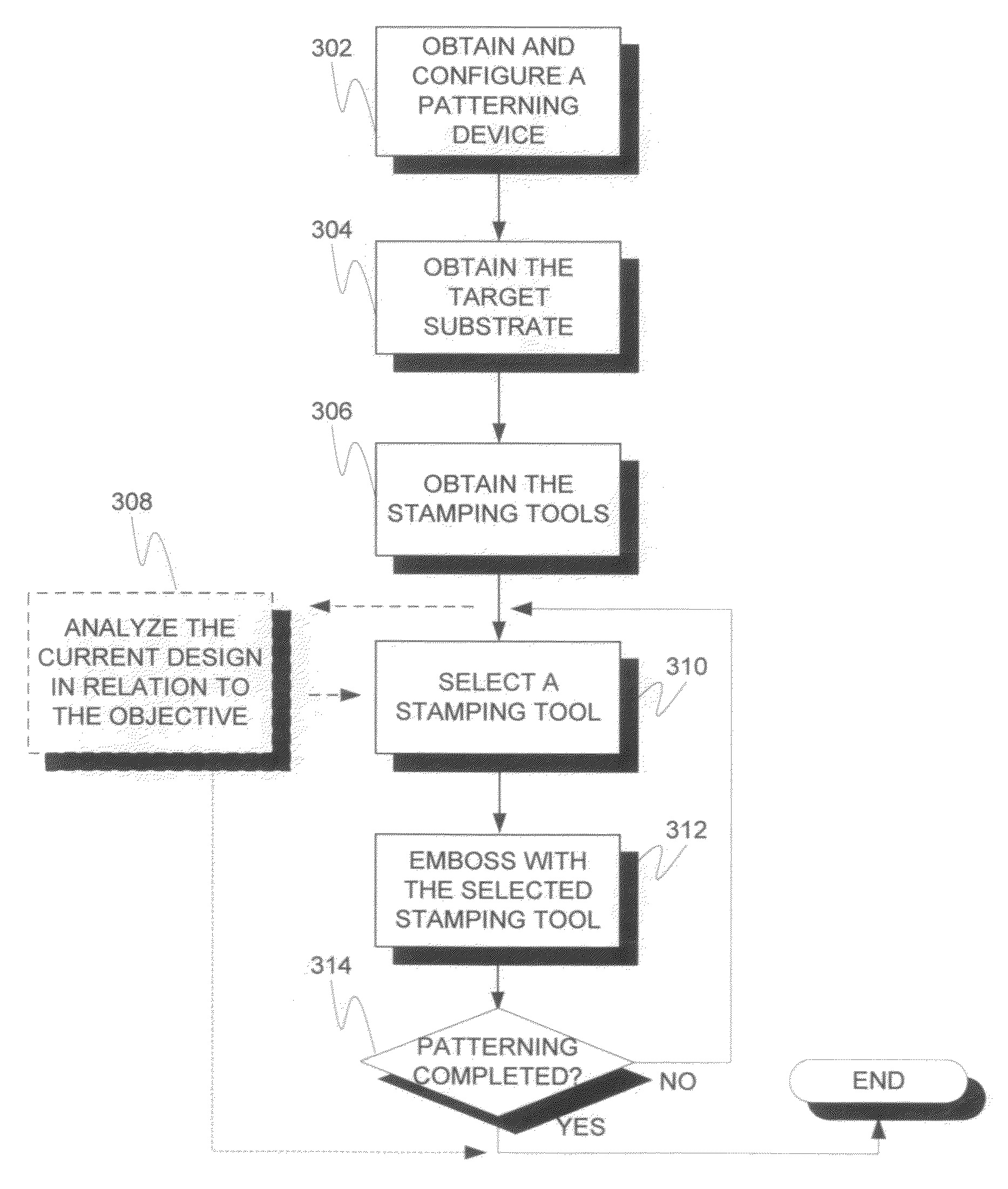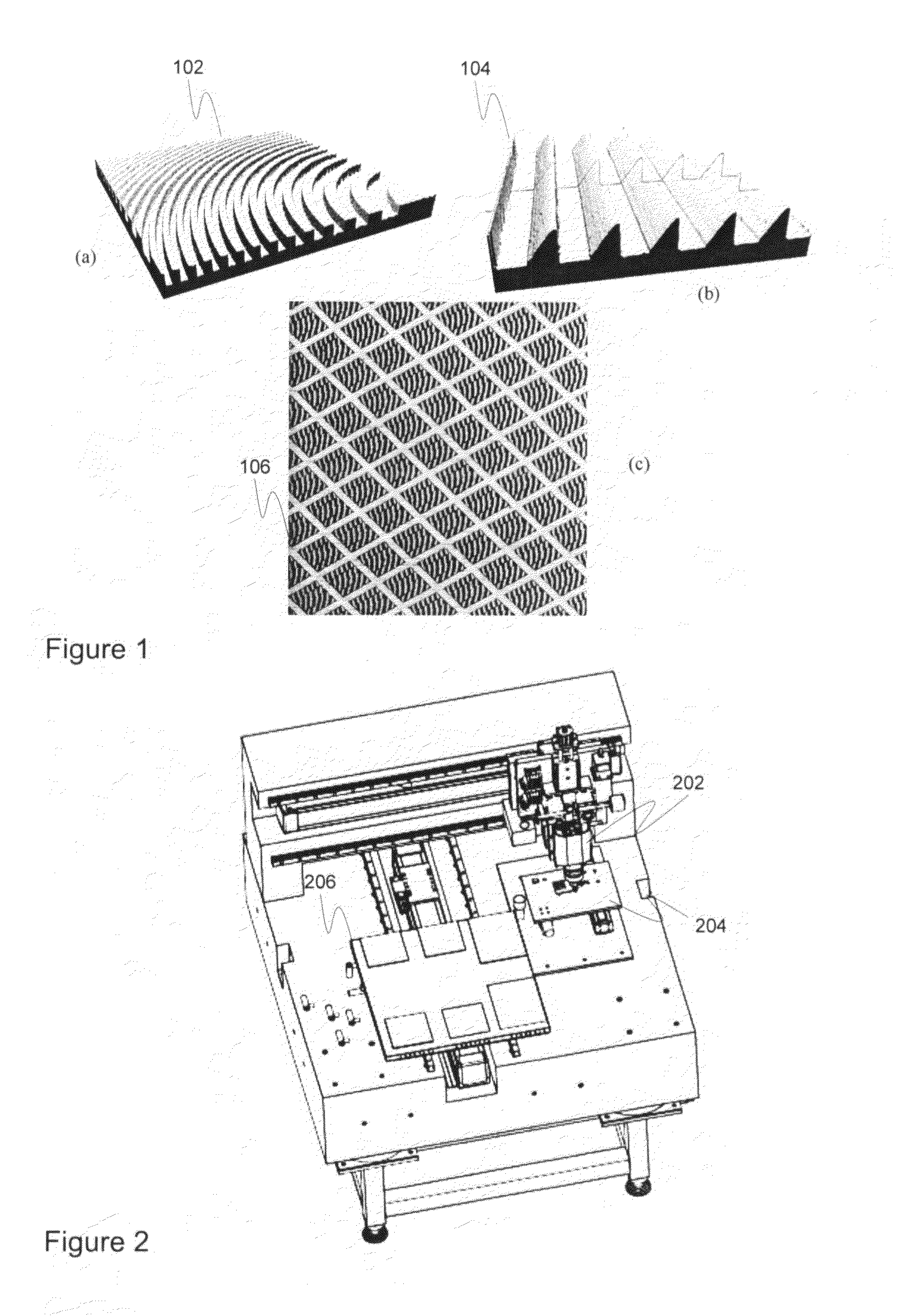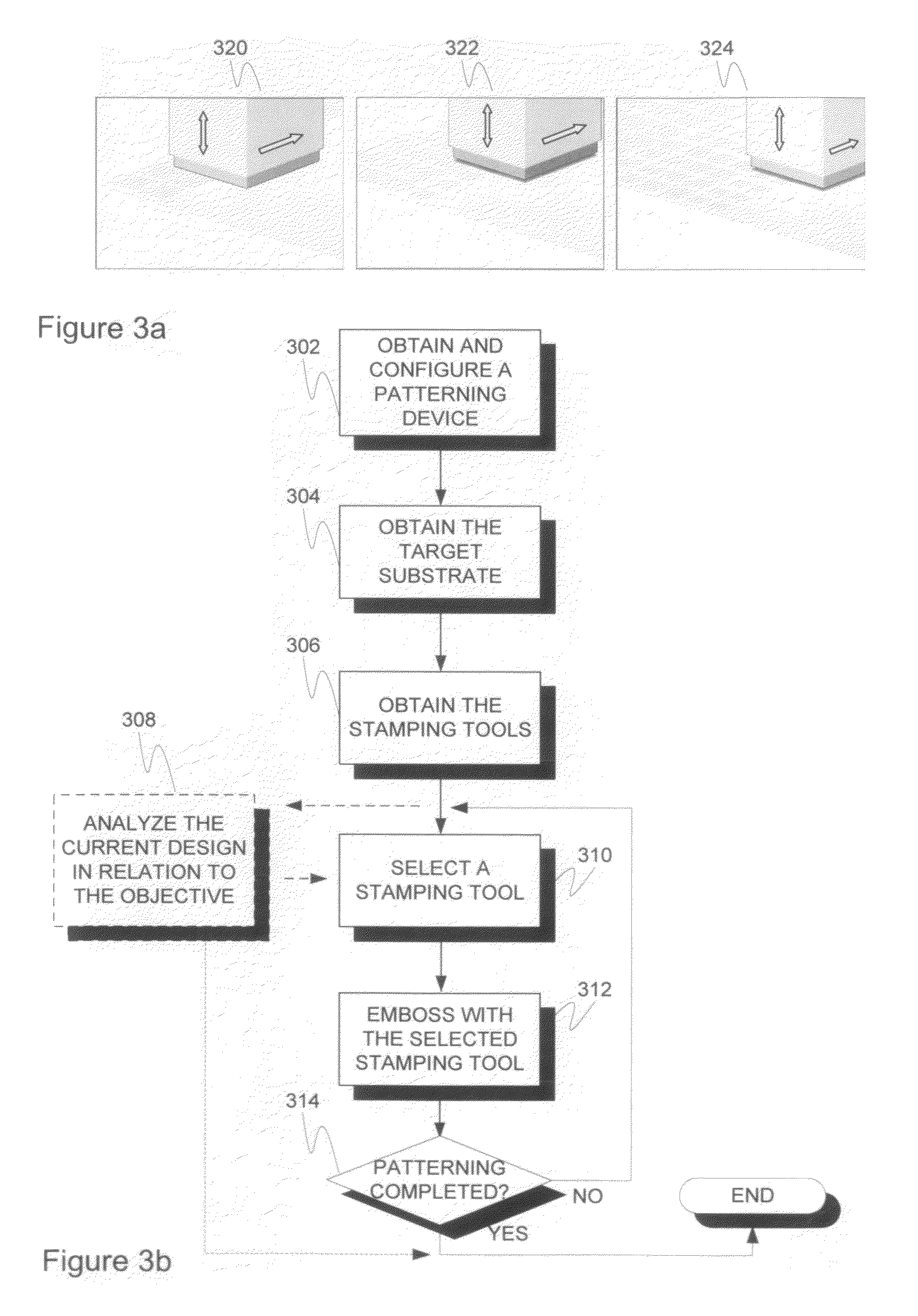Method and arrangement for manufacturing optical products with complex three-dimensional forms
a manufacturing method and technology of optical products, applied in the field of optical microstructure manufacturing methods, can solve the problems of limiting the fabrication of preferred structures, reducing the production efficiency of optical microstructures, etc., to achieve the effect of eliminating design iterations, easy management and modification, and convenient adjustment of pattern density
- Summary
- Abstract
- Description
- Claims
- Application Information
AI Technical Summary
Benefits of technology
Problems solved by technology
Method used
Image
Examples
embodiment 520
[0087]In embodiment 520 shown at the top of FIG. 5d, the stamping tool 534 includes a micro-optic structure 540 attached to the stamping head / manipulator arm 530 by vacuum (note the two vertical lines representing vacuum channels for carrying out an air-suck function), for example. In the case of heat embossing, the heat is conducted to the stamping tool 534 from the heat source via heat conductive material 532, preferably as accurately as possible. Further, an insulation, and / or stopper, and / or alignment member 536 is coupled to the stamping head 530 and / or the stamping tool 534; in the visualized case there is a small distance between the head 534 and the member 536. In stopper and / or alignment action the member(s) 536 guides the embossing such that the structure 540 deforms the surface area of the substrate 538 only to a predetermined depth and prevents the structure 540 from proceeding deeper. As a heat insulator, the member 536 prevents heat conduction from the stamping tool 53...
embodiment 522
[0088]In embodiment 522, the member(s) 536 may be positioned on the substrate 538 as a surface mask, for example.
[0089]In embodiment 524, the whole head 530 is heated, whereby integrated or substrate-based insulator and optionally depth control sheet / layer, are typically used.
[0090]In embodiment 526, the stamping tool 534 includes structure 540 arranged as a sufficiently elongated protrusion from the tool's surface such that upon pressing the tool 534 towards the substrate 538, the desired depth is reached prior to contact between the rest of the tool 534 or head 530 with the substrate 538. The remaining space can be utilized for air cooling, which can be enhanced by utilizing additional air blowing function as depicted by the curved arrow in the figure. In another, either alternative or supplementary embodiment the whole area under embossing and / or adjacent thereof may be air-cooled after the stamping tool 534 has been lifted up from the surface of the substrate 538.
[0091]In embodi...
embodiment 822
[0098]Embodiment 822 illustrates a number of different options for providing a micro-optic lens for the LED. In one embodiment 824, the lens includes a surface relief structure on the surface facing away from the LED. In another embodiment, the surface relief structure of the lens is provided on the surface facing towards the LED instead. Also, an additional layer (thin rectangle in the figure) between the lens including the relief structure and the LED casing can be provided. In a further embodiment 828, includes surface relief forms on both sides of the lens, i.e. it is a question of a double-sided lens, and again, an additional layer is included. The surface relief forms may have different micro-optic forms and the blazed and binary gratings were shown for illustrative purposes, as being appreciated by those skilled in the art.
[0099]Embodiment 830 includes an, in many cases advantageous, lens form, a so-called Fresnel-lens, is shown to highlight the varying and rather complex nat...
PUM
| Property | Measurement | Unit |
|---|---|---|
| sizes | aaaaa | aaaaa |
| sizes | aaaaa | aaaaa |
| size | aaaaa | aaaaa |
Abstract
Description
Claims
Application Information
 Login to View More
Login to View More - R&D
- Intellectual Property
- Life Sciences
- Materials
- Tech Scout
- Unparalleled Data Quality
- Higher Quality Content
- 60% Fewer Hallucinations
Browse by: Latest US Patents, China's latest patents, Technical Efficacy Thesaurus, Application Domain, Technology Topic, Popular Technical Reports.
© 2025 PatSnap. All rights reserved.Legal|Privacy policy|Modern Slavery Act Transparency Statement|Sitemap|About US| Contact US: help@patsnap.com



